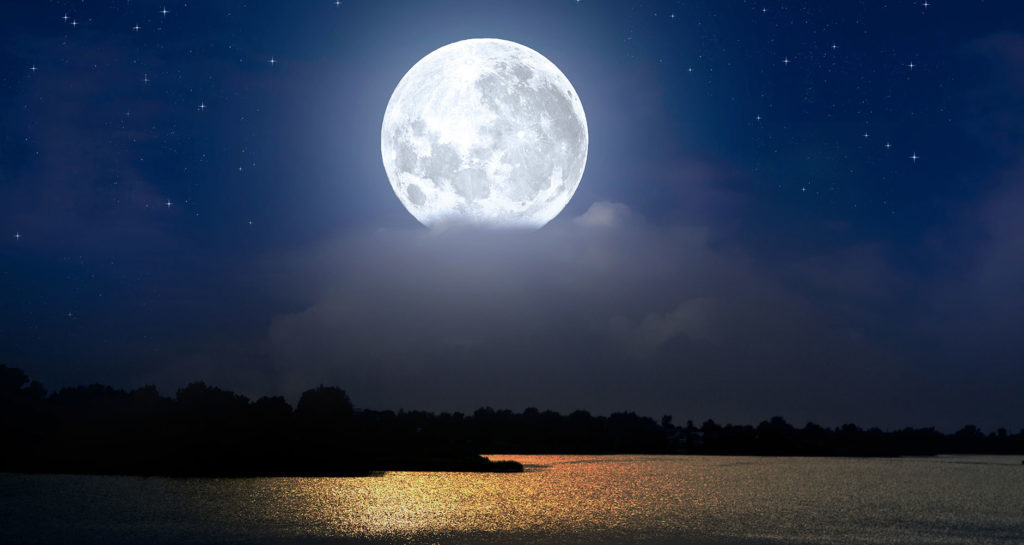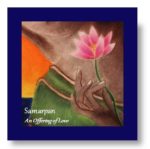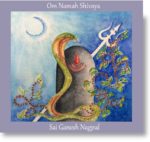Since ancient times, the Moon has been a symbol of dreams and imagination, inspiring artists, poets, scientists and scholars alike to unravel the mysteries held by our lunar companion in space.
Vedic Astrology – a traditional system of Astrology that was developed thousands of years ago – views the Moon as an indicator of life’s potential. When a child is born, the map of the life they will lead is envisioned through a study of the astrological placement of the Moon on that day. Throughout our lives, we are intimately connected with the Moon both physically and mentally, just as the tides of the oceans rise and fall according to the phases of the Moon.
The next time you look up at the Moon in the night sky, notice the quality that the lunar rays inspire in your mind. Moonlight falls softly upon the eyes, and is associated with our more sensitive, creative and emotional nature. This is quite opposite to the Sun, which is heating and energizing, and reflects our extroverted and active nature.
The Moon represents the field of the mind, including the emotions – all that we think about and feel even in our quietest times and spaces. The time of night, which is for our rest and rejuvenation, is the domain of the Moon. When we retreat in to our home spaces, when the hustle and bustle of the day is done, we come face to face with our inner emotions. Our dreams as well often reflect patterns of the subconscious, and the placement of the Moon in a horoscope often determines the origin and nature of these patterns.
Many ancient cultures have followed the lunar calendar, which marks days according to the waxing and waning cycles of the Moon. Notable among the days of a lunar month are the New Moon (Sanskrit – Amavasya) and Full Moon (Sanskrit – Pournami) lunar days. Vedic Astrology acknowledges that of all the heavenly bodies in the solar system, since the Moon is closest to the Earth, its energetic effect upon our lives is significant. In order to make use of the Moon’s powerful effect upon our minds, the days of the New Moon and the Full Moon are perhaps two of the strongest, albeit in different ways.
Vedic culture traditionally associates the New Moon, when the sky is devoid of the Moon’s light and presence, with a more introspective quality. It is meant to be a time of going inward through meditation, reflection and personal practices that are of a quieter and more reflective nature. Just as the Moon retreats in to a cave of darkness, the night of the New Moon becomes conducive to gaining insights and wisdom through retreating in to the silence and peace of our inner selves. An Astrology reading or a profound meditation on a New Moon day/night to reflect upon one’s path in life can be very insightful, perhaps more than at other times, as the nature of the day itself is to draw from an inner wisdom.
The Full Moon, on the other hand, reverses the flow of lunar energy. Vedic Astrology marks the Full Moon as the beginning of the lunar month, and is therefore a conducive day to apply the mind, emotions and personal energy towards new growth. Whether it is setting goals for the future, imagining a new creative project, or channeling the mind in a positive direction, the Full Moon is an auspicious time of the month to initiate, grow and balance our personal energies in a healthy way.
The Moon represents our reach for inner happiness, contentment and the essence of joy in life. As the symbol of the Great Mother, the Moon’s energy brings us comfort and nourishment. She reminds us that regardless of where we are in life, we have the ability to manifest joy, to calm the mind and live in greater alignment with the rhythms and cycles of Nature. Studying the placement of the Moon in the astrological horoscope can bring many insights about how to personalize these profound lunar energies for our highest growth.
By Sai Ganesh Nagpal
This article was originally published by the Miracles Worldwide Health and Wellness Blog.
~~
For astrological consultations with Sai Ganesh Nagpal, please click here: Astro-Counselling with Sai





